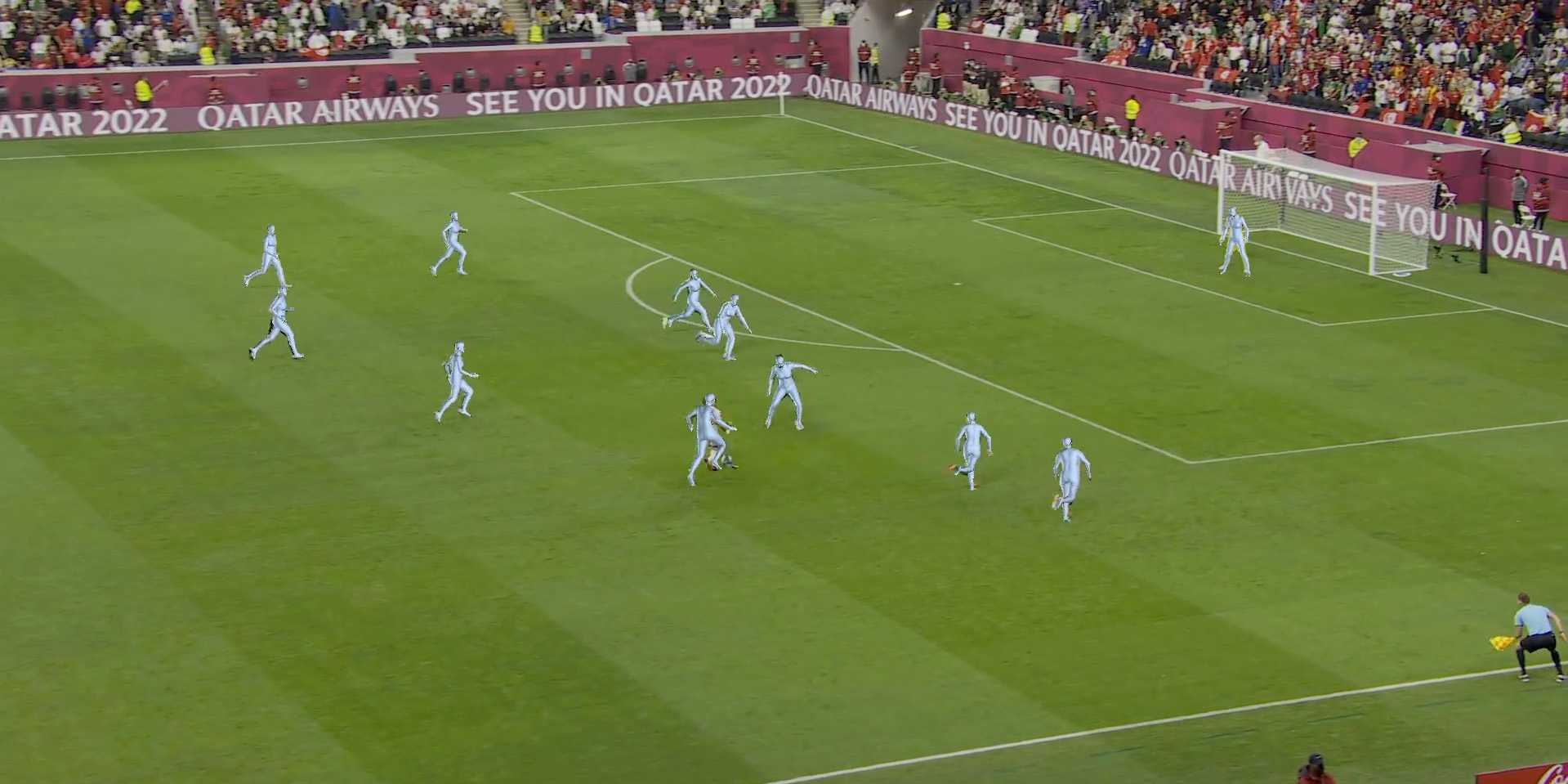This data is then used to “feed” the movable broadcasting camera, which is also calibrated – by moving it in all directions, for example, and zooming it in and out. If the real and digital data overlaps correctly, it is now possible to represent the exact position, trajectory and pose of the individual players on the pitch digitally in three dimensions – using only one camera.
Zoom pushed the system to its limits
Using their dataset, the ETH researchers were then able to make a detailed comparison of whether a single camera with existing MPE technology is able to detect a player in an offside position sufficiently or not. In their study, which was presented at the European Conference on Computer Vision in Milan, the computer scientists found that existing methods struggle with this new dataset, highlighting potential new research directions.
Pose estimations with just one camera can determine poses and movements in a small space with a high degree of accuracy, even in the case of a long focal length or if there is a long distance between the person and the camera. MPE models also perform relatively well with individual motion sequences, but they struggle to determine the relative positions of multiple players in the same space. Zooming in and out with the camera proved to be particularly demanding. “This confirmed to us that a lot of research is still needed in order to achieve a working and stable system,” says Jiang.
Data published for competition
With the WorldPose dataset, the aim is now for other scientists to train their systems and develop algorithms so that accurate AI analysis is possible with a single movable camera in the future. To this end, FIFA has launched an external page Innovation Challenge. In addition to the ETH dataset, FIFA is also providing video sequences of football games for this international research competition, albeit – this time – only from the broadcasting camera.
“As we’re sharing the data with others, this could speed up research in this area,” says Jiang. “If models that provide precise analysis with a single camera one day achieve the same quality as our dataset, the technology will be suitable for widespread use.”
So far, over 150 researchers around the world have already responded to the competition announcement. ETH Zurich is also continuing to train its systems. Jiang says: “We’ll continue working on the dataset and develop further models ourselves.”













Comments
No comments yet